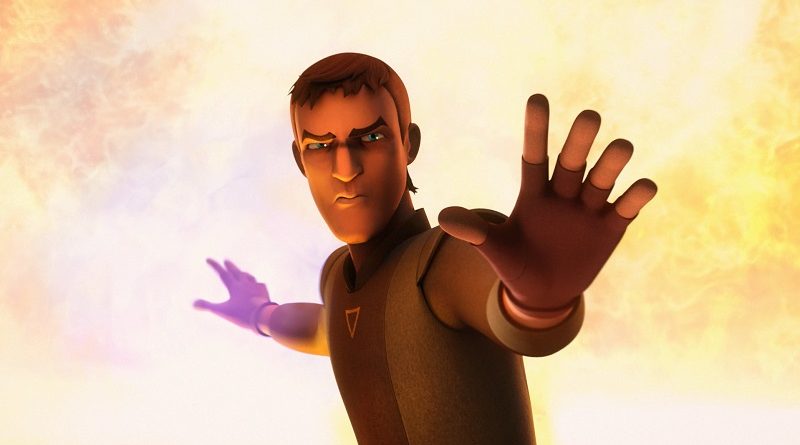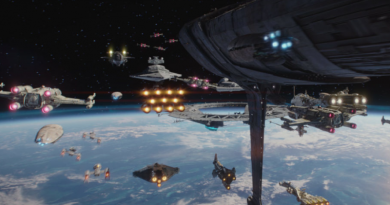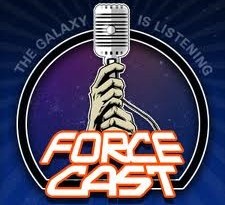Star Wars Themes in the Star Wars Rebels Finale and The Last Jedi
Two months after The Last Jedi premiered in theaters, the Star Wars Rebels animated series broadcast the final seven episodes of its four-season television run. Although set over thirty years apart on the Star Wars in-universe timeline and centered around different galactic and interpersonal conflicts, Rebels and The Last Jedi share a number of prominent thematic similarities. This is not surprising, of course, because both stories draw heavily upon George Lucas’ six Star Wars films, as well as some elements of Lucas’ The Clone Wars animated series, as their fundamental source material. As with the contrasts to Marvel’s Black Panther movie, though, The Last Jedi struggles in comparison to how Rebels deploys, unfolds, and resolves those common themes.
Most importantly, the concluding episodes of Rebels emphasized affirming portrayals of its heroic characters. Where The Last Jedi engaged in deconstruction of its heroes, and even the very concept of heroism itself, Rebels ended on the tone of aspirational heroic fiction. Where The Last Jedi sought to be realistic, Rebels sought to be inspiring.
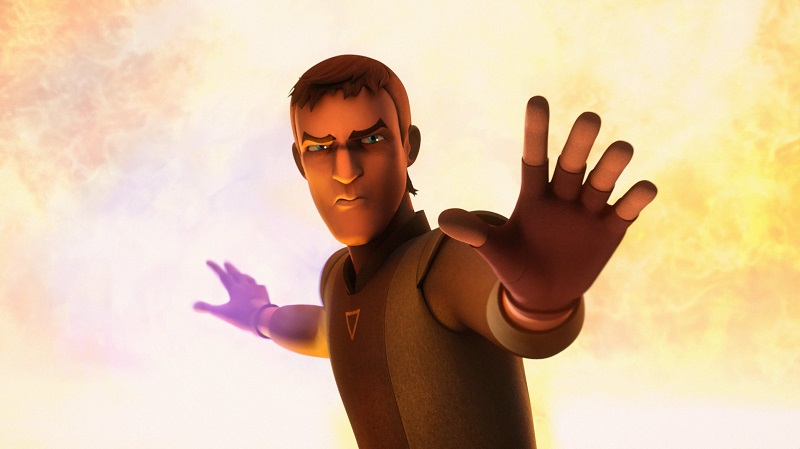 In both tales, a Jedi Master gives up his life in an act of self-sacrifice. Kanan’s is more impactful and meaningful to the other characters in the story. Using the Force to contain the explosion from the fuel depot, Kanan’s last act not only literally saves his friends from immediate immolation but also accomplishes the ultimate goal of the team’s mission to Capital City by inflicting major damage on the facilities necessary for TIE Defender production. In the moments before his death, Kanan provides both Ezra and Hera with a farewell and closure, making direct connections which ensure that they understand the intention and willingness of his sacrifice. Subsequently, both Ezra and Hera draw inspiration from Kanan’s death despite their grief, using the nobility of his example as motivation to fight onward and ensure his sacrifice was not in vain. In each of these ways, Luke’s sacrifice in The Last Jedi is less direct and less emotional. Luke’s use of the Force is impressive, but he does not save his friends or the Resistance; he is only a diversion, stalling for time. Luke’s bids a brief farewell to Leia, but only as an astral projection, and he never gets to say a personal goodbye to Rey – or Han. While his death revives the Legend of Luke Skywalker, that denouement is also abstracted – a brief final cameo from “broom boy” and his two friends – rather than directly connected to Rey, Finn, Poe, and Leia, who must continue the fight against the First Order in Luke’s absence.
In both tales, a Jedi Master gives up his life in an act of self-sacrifice. Kanan’s is more impactful and meaningful to the other characters in the story. Using the Force to contain the explosion from the fuel depot, Kanan’s last act not only literally saves his friends from immediate immolation but also accomplishes the ultimate goal of the team’s mission to Capital City by inflicting major damage on the facilities necessary for TIE Defender production. In the moments before his death, Kanan provides both Ezra and Hera with a farewell and closure, making direct connections which ensure that they understand the intention and willingness of his sacrifice. Subsequently, both Ezra and Hera draw inspiration from Kanan’s death despite their grief, using the nobility of his example as motivation to fight onward and ensure his sacrifice was not in vain. In each of these ways, Luke’s sacrifice in The Last Jedi is less direct and less emotional. Luke’s use of the Force is impressive, but he does not save his friends or the Resistance; he is only a diversion, stalling for time. Luke’s bids a brief farewell to Leia, but only as an astral projection, and he never gets to say a personal goodbye to Rey – or Han. While his death revives the Legend of Luke Skywalker, that denouement is also abstracted – a brief final cameo from “broom boy” and his two friends – rather than directly connected to Rey, Finn, Poe, and Leia, who must continue the fight against the First Order in Luke’s absence.
Similarly, the conclusion of Kanan’s story reaffirms the power of love as inspiration to oppose evil. Though the creators of Rebels often had hedged their public statements about the relationship between Kanan and Hera in terms of its physical intimacy, the deep emotional intimacy between the “space married” parental figures in the Ghost crew remained consistent from the series’ earliest episodes even if the onscreen kiss did not arrive until the very end. Naturally, they did not always agree, and sometimes even held objectives pointing in different directions – such as when Kanan’s past made him quite reluctant to join the more formal militarized version of the Rebellion as Phoenix Squadron formed. Yet at no point did Rebels portray Kanan and Hera as mistrustful of one another or otherwise estranged. In that way the contrast with The Force Awakens and The Last Jedi is quite stark, because the Sequel Trilogy began with Han-Leia, Luke-Leia, and Han-Luke bonds each sundered, never to be reforged. Likewise, the tragedy of Ben Solo’s fall to the dark side and massacre of the innocent Jedi trainees at Luke’s temple caused Luke to withdraw from his family and from the galaxy. After Kanan’s death, though, Hera becomes determined to fight even harder to save Lothal and the galaxy from the Empire’s tyranny.
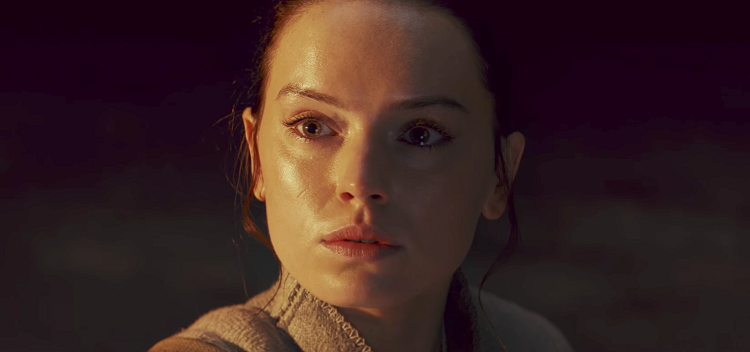 Both Rebels and The Last Jedi involve an orphan Jedi apprentice who must resist the lure of temptation by the dark side. In The Last Jedi, Rey’s temptations to darkness are disconnected from her motivations in the rest of the films. In the Mirror Cave, Rey says, “show me my parents” – even though The Force Awakens rather clearly indicates that she knows the identity of the persons whose return she has been awaiting on Jakku. Immediately afterward she tells Kylo Ren that she has never felt more alone – even though she now has friends, allies, and a reluctant Jedi teacher rather than a life of isolation in a desert wreck. On the Supremacy, Kylo says her parents are “filthy junk traders” who traded their daughter “for drinking money” – yet he does not then appeal to Rey’s sense of abandonment and loneliness, but rather to a dynastic argument that she has “no place in this story” because of who her parents are, rather than what they did to her. In this way, the temptations for Rey are not particularly compelling in the context of her overall story, weakening the difficulty of her choice to reject them. In Rebels’ penultimate story arc, on the other hand, Ezra’s temptation is tied directly to the nature of his loss. As a youth he had long believed his parents had been executed by the Empire for their seditious transmissions, only to learn later that they had been alive in an Imperial prison the whole time before being killed during a prison uprising after hearing Ezra’s own broadcast urging resistance against the Empire. Aboard the Chimaera, Palpatine exploits the possibilities opened by the existence of the World Between Worlds to offer Ezra the prospect of reuniting with his parents, the very thing he for which he has wistfully yearned for a decade. Ezra’s actions show that he is profoundly affected by this offer, especially as he draws closer to the hazy portal teasing a glimpse of his parents in human form instead of an old holo. In that moment, the audience feels a legitimate chance that he might succumb. In the end, though, he finds the courage to reject Palpatine’s temptation by recognizing that the love of his new found family gives him the strength to let go of his attachment for long-lost days with his parents. That same angle would have worked powerfully with Rey, as well, yet The Last Jedi keeps her motivations focused solely on her dynamic with Kylo Ren, not her new found family.
Both Rebels and The Last Jedi involve an orphan Jedi apprentice who must resist the lure of temptation by the dark side. In The Last Jedi, Rey’s temptations to darkness are disconnected from her motivations in the rest of the films. In the Mirror Cave, Rey says, “show me my parents” – even though The Force Awakens rather clearly indicates that she knows the identity of the persons whose return she has been awaiting on Jakku. Immediately afterward she tells Kylo Ren that she has never felt more alone – even though she now has friends, allies, and a reluctant Jedi teacher rather than a life of isolation in a desert wreck. On the Supremacy, Kylo says her parents are “filthy junk traders” who traded their daughter “for drinking money” – yet he does not then appeal to Rey’s sense of abandonment and loneliness, but rather to a dynastic argument that she has “no place in this story” because of who her parents are, rather than what they did to her. In this way, the temptations for Rey are not particularly compelling in the context of her overall story, weakening the difficulty of her choice to reject them. In Rebels’ penultimate story arc, on the other hand, Ezra’s temptation is tied directly to the nature of his loss. As a youth he had long believed his parents had been executed by the Empire for their seditious transmissions, only to learn later that they had been alive in an Imperial prison the whole time before being killed during a prison uprising after hearing Ezra’s own broadcast urging resistance against the Empire. Aboard the Chimaera, Palpatine exploits the possibilities opened by the existence of the World Between Worlds to offer Ezra the prospect of reuniting with his parents, the very thing he for which he has wistfully yearned for a decade. Ezra’s actions show that he is profoundly affected by this offer, especially as he draws closer to the hazy portal teasing a glimpse of his parents in human form instead of an old holo. In that moment, the audience feels a legitimate chance that he might succumb. In the end, though, he finds the courage to reject Palpatine’s temptation by recognizing that the love of his new found family gives him the strength to let go of his attachment for long-lost days with his parents. That same angle would have worked powerfully with Rey, as well, yet The Last Jedi keeps her motivations focused solely on her dynamic with Kylo Ren, not her new found family.
The two Jedi apprentices learn a last lesson in their respective stories, too. For Ezra, the lesson draws directly from the core themes laid out in Lucas’ films about what it means to be a Jedi, particularly in relation to emotional attachments. In The Empire Strikes Back, Yoda emphasizes to Luke the importance of self-discipline and control, and warns him that his decision to leave to attempt to rescue his friends could have dire consequences because he has not yet completed his training. In Return of the Jedi, Luke’s love for his father leads to the demise of the Sith, but his love for Leia nearly pushes him into a vengeful murder in his retaliatory attack after Vader threatens to turn her to the dark side instead. In Attack of the Clones and Revenge of the Sith, it is Anakin’s inability to master his emotions, particularly his fears after his visions about his mother and Padmé, that lead him down the dark path. At the end of Rebels, Ezra too understands that a Jedi must let go – and he does, first declining the chance to use the World Between Worlds to save Kanan, then turning down Palpatine’s offer to rejoin his parents, and finally leaving his friends behind to ensure Thrawn’s defeat at Lothal. For Rey in The Last Jedi, by contrast, the last lesson is deconstructive. Rather than learning about herself, Rey learns that she cannot rely on others. First she places her faith in Luke, hoping he will teach her the ways of the Jedi and return to the Resistance to oppose the First Order. Then she places her faith in Kylo Ren, believing that her vision of his turn against Snoke will mean his return to the light side. Both men fail to live up to her expectations. When the film ends, Rey is alone as the last Jedi – not because she has learned the keys to the Jedi path, but only by process of elimination.
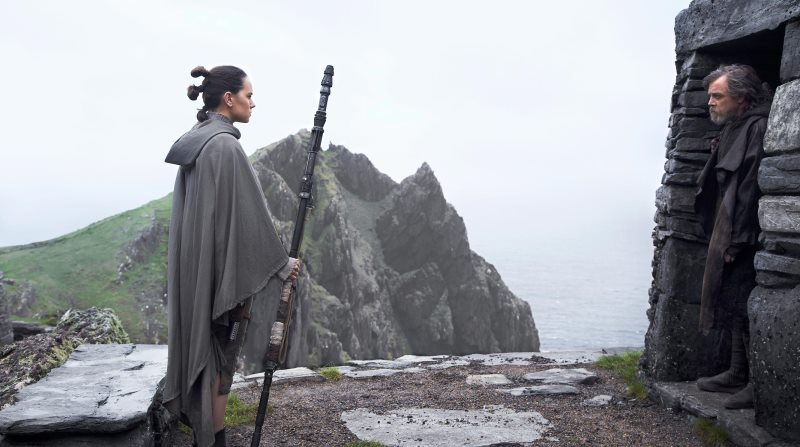 In a similar way, The Last Jedi and Rebels take very different approaches to the Star Wars theme of teamwork and reliance on trusted allies. For most of The Last Jedi, the core heroic characters are isolated from one another and in conflict with their allies. Rey is on Ahch-To, where Luke treats her in a manner that is hostile, then later merely contentious, before she travels to the Supremacy to strike up an alliance with Kylo Ren, the man who kidnapped, imprisoned, and mind-probed her a few days earlier. Poe ends up leading a mutiny against Holdo on the damaged Raddus during Leia’s incapacity. After an unsavory start, Finn and Rose manage the most effective camaraderie in the film. The Resistance group, minus Rey, is reunited for collective action in the ski speeder battle at Crait in the last section of the film, only to be resoundingly defeated by the First Order before they are spared by unplanned and unexpected intervention from Luke and Rey. The series finale of Rebels, on the other hand, makes trust and teamwork integral to the heroes’ success. Ezra and Sabine have reached the point that they trust one another implicitly, from the infiltration of the Jedi Temple site to the plan to lure Pryce into a trap and Sabine’s ultimate act of trust in covering for Ezra’s getaway to surrender to Thrawn. The team gives Hera room to grieve, then welcomes her back in command. The Ghost crew trusts Kallus not based on a momentary vision in the Force, but on his proven track record of repudiation of the Empire and a commitment to the Rebellion. Whereas The Last Jedi’s DJ has selfishness that knows no bounds, as Ezra gathers every possible ally – from Wolffe and Gregor to Mart Mattin and Ketsu Onyo – he can even count on the eminently self-dealing Hondo Ohnaka to honor their bond of friendship in the last stand against the Empire.
In a similar way, The Last Jedi and Rebels take very different approaches to the Star Wars theme of teamwork and reliance on trusted allies. For most of The Last Jedi, the core heroic characters are isolated from one another and in conflict with their allies. Rey is on Ahch-To, where Luke treats her in a manner that is hostile, then later merely contentious, before she travels to the Supremacy to strike up an alliance with Kylo Ren, the man who kidnapped, imprisoned, and mind-probed her a few days earlier. Poe ends up leading a mutiny against Holdo on the damaged Raddus during Leia’s incapacity. After an unsavory start, Finn and Rose manage the most effective camaraderie in the film. The Resistance group, minus Rey, is reunited for collective action in the ski speeder battle at Crait in the last section of the film, only to be resoundingly defeated by the First Order before they are spared by unplanned and unexpected intervention from Luke and Rey. The series finale of Rebels, on the other hand, makes trust and teamwork integral to the heroes’ success. Ezra and Sabine have reached the point that they trust one another implicitly, from the infiltration of the Jedi Temple site to the plan to lure Pryce into a trap and Sabine’s ultimate act of trust in covering for Ezra’s getaway to surrender to Thrawn. The team gives Hera room to grieve, then welcomes her back in command. The Ghost crew trusts Kallus not based on a momentary vision in the Force, but on his proven track record of repudiation of the Empire and a commitment to the Rebellion. Whereas The Last Jedi’s DJ has selfishness that knows no bounds, as Ezra gathers every possible ally – from Wolffe and Gregor to Mart Mattin and Ketsu Onyo – he can even count on the eminently self-dealing Hondo Ohnaka to honor their bond of friendship in the last stand against the Empire.
While many Star Wars tales encompass some variety of common elements like these due to their grounding in shared source material, both the fans and the storytellers also enjoy when further Star Wars adventures expand the universe by bringing new, exciting, and unexpected developments to the characters or the lore. The Last Jedi approaches this idea through subversion, using rejection of fan expectations and familiar Star Wars elements to deliver something new: Luke wants the Jedi Order to die rather than survive; Rey allies with Kylo Ren; Luke momentarily considered killing Ben Solo in his sleep after discovering the extent of the darkness already within him; Kylo persists in his admiration of Vader by rejecting the return to the light that Rey offers to him; the arms dealers of Canto Bight sell to both the First Order and the Resistance; mistakes by Poe and Finn lead to the destruction of most of the Resistance transports headed toward Crait. Some amount of subverting tropes and themes can be effective, but perhaps The Last Jedi relies upon that too much, and not enough upon the aspirational heroic fiction side of Star Wars, for the tastes of many fans.
 The conclusion of Rebels has no shortage of unexpected twists and turns, but does not rely upon subverting the franchise to do so. The series had hinted for four seasons about a hidden secret within Lothal’s Jedi Temple, but it seems unlikely anyone predicted the mystical World Between Worlds with portals to other places and times. After teases from Dave Filoni, fans might have expected a bit of clarity about the fate of Ahsoka Tano at Malachor in the past, but her brief physical reunion with Ezra in the present inside the metaphysical realm of the World Between Worlds would have been difficult to anticipate. The Loth-wolves shift from spiritual protectors of Lothal to literal ones, wreaking havoc in the stormtrooper ranks at the Rebel hideout. Ezra seems triumphant with the Imperial forces lured into the dome, only to realize the full extent of Thrawn’s willingness to massacre innocent civilians to exploit the Jedi’s conscience. Ezra surrenders to Thrawn with a plan to defeat him – calling in a favor from the mystical purgill to rend the Imperial fleet asunder. Throughout the final episodes of Rebels the heroes are nearly constantly at peril of life and limb, yet ultimately Kanan is the only major character who dies, a miniscule tally compared to the lengthy list of casualties in The Last Jedi. With the Empire’s massive resources, the defeat of Thrawn would seem to be only a temporary setback, but again Rebels delivers an unexpected but effective and creative solution: with the Lothal temple lost, the Emperor needs to focus on far more important priorities in the aftermath of Scarif and Yavin.
The conclusion of Rebels has no shortage of unexpected twists and turns, but does not rely upon subverting the franchise to do so. The series had hinted for four seasons about a hidden secret within Lothal’s Jedi Temple, but it seems unlikely anyone predicted the mystical World Between Worlds with portals to other places and times. After teases from Dave Filoni, fans might have expected a bit of clarity about the fate of Ahsoka Tano at Malachor in the past, but her brief physical reunion with Ezra in the present inside the metaphysical realm of the World Between Worlds would have been difficult to anticipate. The Loth-wolves shift from spiritual protectors of Lothal to literal ones, wreaking havoc in the stormtrooper ranks at the Rebel hideout. Ezra seems triumphant with the Imperial forces lured into the dome, only to realize the full extent of Thrawn’s willingness to massacre innocent civilians to exploit the Jedi’s conscience. Ezra surrenders to Thrawn with a plan to defeat him – calling in a favor from the mystical purgill to rend the Imperial fleet asunder. Throughout the final episodes of Rebels the heroes are nearly constantly at peril of life and limb, yet ultimately Kanan is the only major character who dies, a miniscule tally compared to the lengthy list of casualties in The Last Jedi. With the Empire’s massive resources, the defeat of Thrawn would seem to be only a temporary setback, but again Rebels delivers an unexpected but effective and creative solution: with the Lothal temple lost, the Emperor needs to focus on far more important priorities in the aftermath of Scarif and Yavin.
Finally, the epilogues of the two stories offer different takes on the fundamental Star Wars theme of hope. In The Last Jedi, the heroes are in dire straits: a handful of Crait survivors on the Falcon, no warships or starfighters to form a fleet, no allies who came to their aid, and one partially trained Jedi apprentice with a dozen old books and one broken lightsaber. A spark of hope exists in the revival of the Legend of Luke Skywalker, but the audience sees only how that inspires “broom boy” and his friends, not the crew of the Falcon. In Rebels, the epilogue focuses directly on the beloved characters: Hera and Chopper will raise her son with Kanan, Jacen Syndulla, aboard the Ghost; Zeb and Kallus find catharsis on Lira San; Sabine helps the Rebellion ensure the liberation of Lothal – before leaving with Ahsoka to find Ezra and bring him home. These uplifting endings provide plenty of fodder for new tales while giving fans of the series’ four seasons the affirmation that the hope they saw in the Ghost crew’s rebellion was a fight worth fighting.
Ultimately, the culmination of Rebels feel truer to the spirit of the Star Wars franchise than The Last Jedi. Perhaps Dave Filoni’s years working directly with Lucas on The Clone Wars provided him with keener insight than Rian Johnson, who came to The Last Jedi from the perspective of a lifelong fan with something to prove upon receiving the keys to the kingdom. Time will tell which vision of Star Wars storytelling will be viewed more favorably with the hindsight provided in the years ahead.
- BJ Priester Talks The Acolyte Episode 6 on Who’s the Bossk? - July 7, 2024
- Dave Filoni Talks Writing AHSOKA and Guiding the Future of Star Wars Storytelling - June 21, 2024
- Lessons in Franchise Management – MCU: The Reign of Marvel Studios - January 14, 2024

